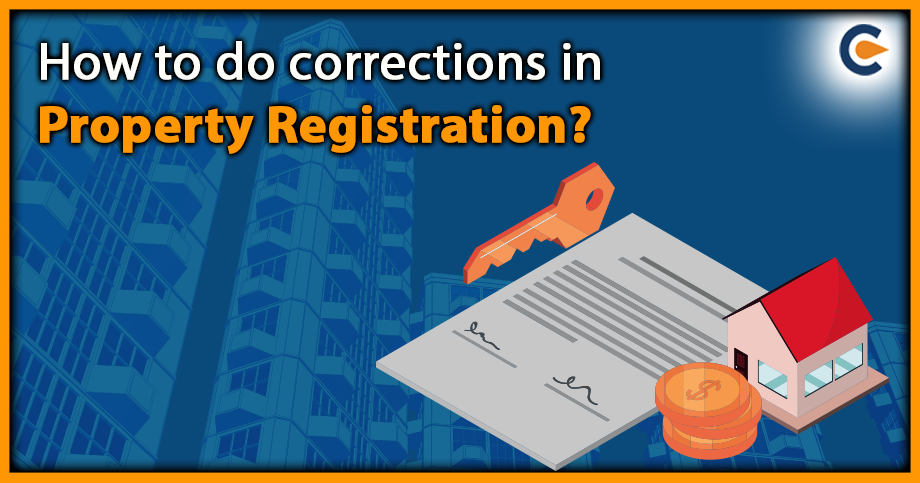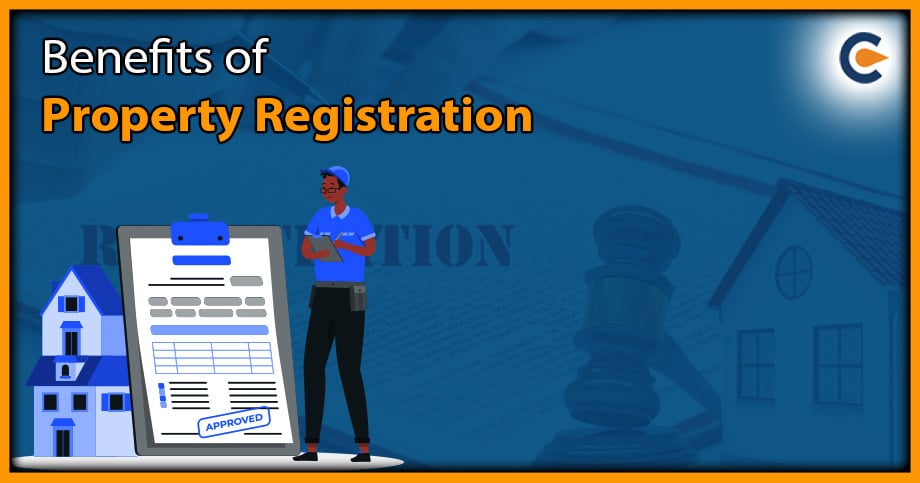Buying a property is one of the most significant investments you’ll ever make. It involves a lot of legal procedures, and one such process is property registration. This registration is a legal process that involves transferring the property’s ownership rights from the seller to the buyer. It’s a crucial step that helps protect your ownership rights and avoid any legal disputes in the future. However, sometimes errors can occur during the registration process, which can lead to complications. In such cases, it’s essential to know how to do corrections in property registration. In this blog, we’ll discuss the steps involved in correcting errors in property registration.
Step 1: Identify the Error
The first step in correcting errors in property registration is to identify the error. The most common errors that can occur during property registration are typographical errors, errors in the property’s description, or errors in the names of the parties involved. Once you’ve identified the error, you need to assess whether it’s a minor error or a significant one that requires legal intervention.
Step 2: File an Application for Correction
If the error is a minor one, you can file an application for correction at the registration office where the property was registered. The application must be made by the person who registered the property or the buyer. The application must include details of the error, the reason for the correction, and the necessary documents to support the application.
Step 3: Verification of the Application
Once you’ve submitted the application, the registration office will verify the application and the supporting documents. The office may also ask for additional documents or information to support the application. If the office finds the application and supporting documents in order, it will approve the application and make the necessary corrections.
Step 4: Correction in Records
After the verification process, the Registration office will make the necessary corrections in the property registration records. The office will issue a revised registration certificate reflecting the corrected information.
Step 5: Update Relevant Documents
Once the correction is made in the property registration records, it’s essential to update other relevant documents, such as the property tax records, bank loan documents, and insurance documents, to reflect the corrected information. This will help avoid any legal disputes in the future and ensure that the property’s ownership rights are protected.
Property Registration and the steps involved
This registration is a legal process of transferring the ownership rights of a property from the seller to the buyer. It’s a crucial step in real estate transactions and helps establish legal ownership of the property. Property registration is governed by the Registration Act, 1908, and is mandatory for any property transaction involving a transfer of ownership.
Benefits of Property Registration:
Establishes Legal Ownership: It helps establish legal ownership of the property, which is crucial in case of any legal disputes.
Avoids Frauds: It helps prevent frauds and scams, as it involves a thorough verification process.
Obtaining Bank Loans: Property registration is mandatory for obtaining bank loans for property purchases. Banks require a registration certificate as proof of ownership.
Property Tax Payment: it helps in paying property taxes, as the property registration certificate is used as proof of ownership while paying taxes.
It is a legal process of transferring the ownership rights of a property from the seller to the buyer. It’s a crucial step in real estate transactions and helps establish legal ownership of the property. Property Registration is governed by the Registration Act, 1908, and is mandatory for any property transaction involving a transfer of ownership.
The process of property registration involves several steps, including:
Verification of Documents: Before the registration process begins, the buyer needs to verify the property documents to ensure that the property is legal and has a clear title. This includes verifying the ownership documents, property tax receipts, building plan approvals, and any other relevant documents.
- Payment of Stamp Duty: The buyer needs to pay stamp duty, which is a state tax levied on property transactions, based on the property’s market value. The stamp duty rates vary from state to state.
- Preparation of Sale Deed: The seller and buyer need to prepare a sale deed, which is a legal document that contains the details of the property transaction, such as the property’s location, size, price, and ownership details. The sale deed must be signed by both the parties involved in the transaction.
- Submission of Documents: The buyer needs to submit the sale deed, along with other necessary documents, such as identity proof, address proof, and passport-sized photographs, to the sub-registrar’s office within four months from the date of the sale agreement.
- Verification of Documents: The sub-registrar’s office verifies the documents submitted by the buyer and checks for any discrepancies.
- Issuance of the Certificate: Once the documents are verified, the buyer needs to pay the registration fee, which is a nominal fee charged for registration. The sub-registrar then registers the property and issues a certificate to the buyer, establishing legal ownership of the property.
Benefits of Property Registration:
- Establishes Legal Ownership: It helps establish legal property ownership, which is crucial in case of any legal disputes.
- Avoids Frauds: This registration helps prevent frauds and scams, as it involves a thorough verification process.
- Obtaining Bank Loans: This is mandatory for obtaining bank loans for property purchases. Banks require a registration certificate as proof of ownership.
- Property Tax Payment: This Registration helps in paying property taxes, as the property registration certificate is used as proof of ownership while paying taxes.
Registration Act, 1908
Property registration in India is regulated by the Registration Act, 1908. The Act was enacted to establish a uniform law for the registration of documents, such as sale deeds, mortgage deeds, leases, and other legal documents. The primary objective of the Act is to ensure the legal validity of property transactions and to maintain a proper record of such transactions.
The Registration Act, 1908, provides for the appointment of Registrars and Sub-Registrars for each district or a group of districts. The Registrar is responsible for maintaining a record of registered documents, while the Sub-Registrar is responsible for registering documents.
The Act lays down various rules and procedures for the registration of documents. According to the Act, a document that is required to be registered must be presented to the Sub-Registrar within four months from the date of execution. The Sub-Registrar must ensure that the document is executed voluntarily and both parties have signed it. The Sub-Registrar also verifies the identity of the parties involved in the transaction.
The Act also provides for the payment of stamp duty on documents, which is a state tax levied on property transactions based on the property’s market value. The stamp duty rates vary from state to state. The payment of stamp duty is essential for the registration of the document.
The Registration Act[1] 1908 also provides for the maintenance of proper records of registered documents. The Registrar is required to maintain a book called the “Register of Documents” in which all registered documents are entered chronologically.
Conclusion
This registration is a crucial process that involves a lot of legal procedures. Errors can occur during the registration process, leading to complications. However, correcting errors in the registration is possible. It’s essential to identify the error, file an application for correction, verify the application, make the necessary corrections in the records, and update relevant documents. By following these steps, you can correct errors in this registration and protect your ownership rights.
Read our Article:How To Do GST Registration For Property Dealers?










